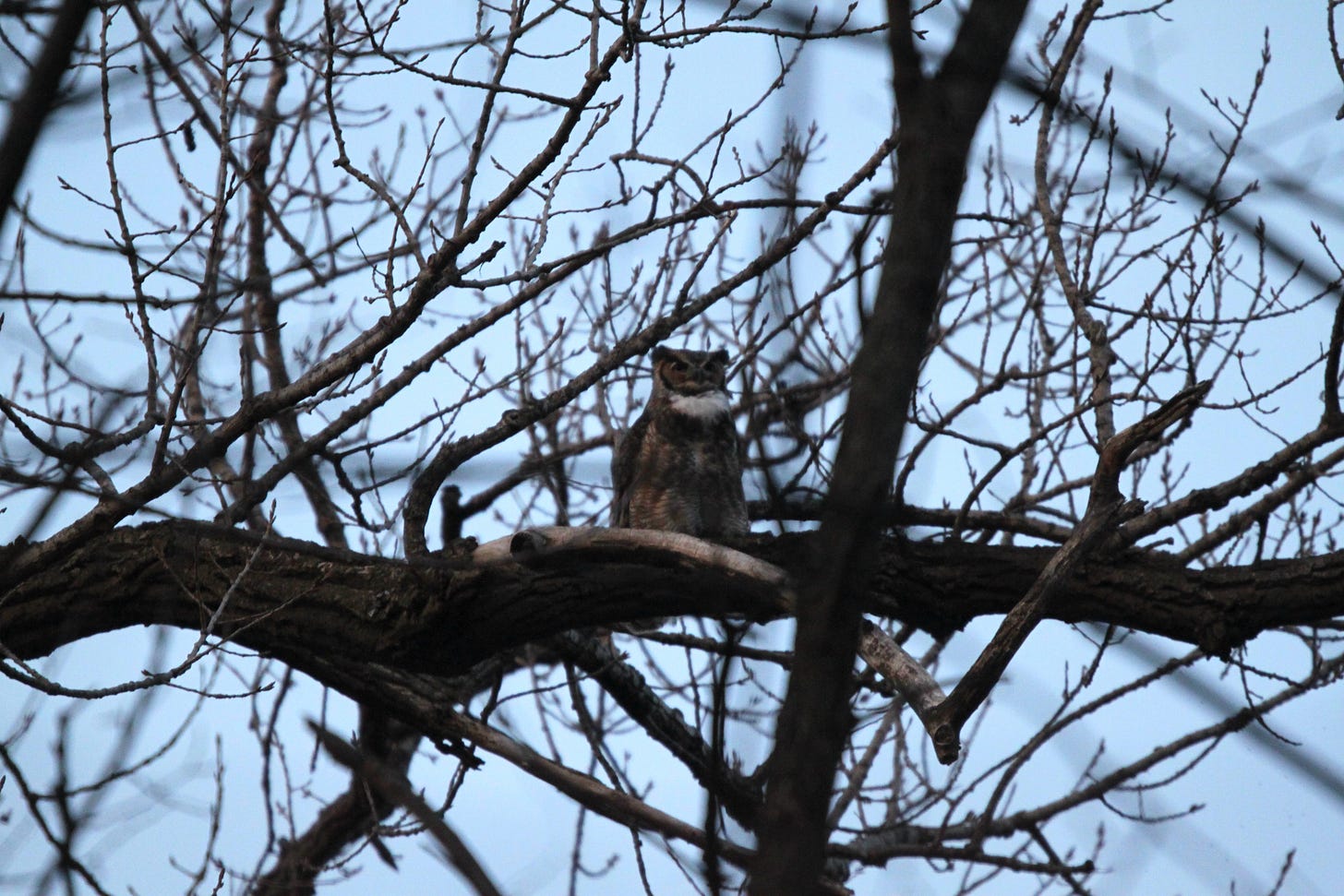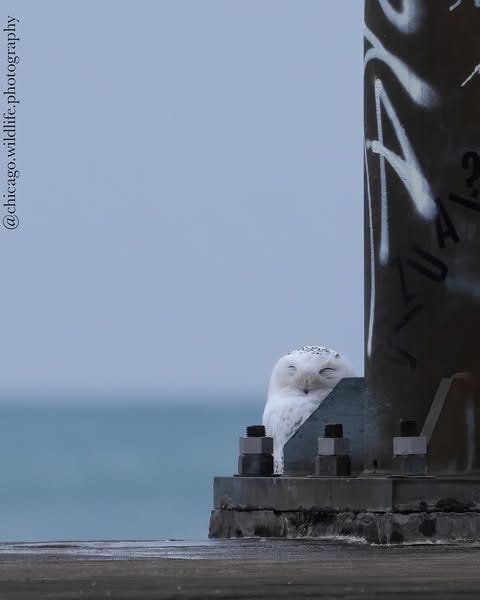It's wise to be thoughtful around owls
It’s the time of year to re-visit some of the guidelines for engaging with owls in the field.
For centuries, owls have been a source of mystery, fear, and intrigue. They are among the most exciting species to observe and photograph among novice birders and experts alike. However, special consideration should be given when in proximity to these magnificent creatures.
Section 1(b) of the American Birding Association’s Code of Birding Ethics states: “Avoid stressing birds or exposing them to danger. Be particularly cautious around active nests and nesting colonies, roosts, display sites, and feeding sites. Limit the use of recordings and other audio methods of attracting birds…Always exercise caution and restraint when photographing, recording, or otherwise approaching birds.”
These guidelines are particularly apt for owls, many of which migrate vast distances to Illinois. Due to their mostly nocturnal nature, owls may be especially vulnerable as humans observe them in daytime. Further, owls that are nesting, as with most nesting birds, may be placed at-risk by disruptions. The presence of people can stress owls and cause them to miss a meal or make them more susceptible to predation.
There are several guidelines to follow when determining how close one should be to an owl. First, it is recommended to view owls through binoculars, a scope, or a telephoto lens. Then determine if it is appropriate to even be in the presence of an owl, and whether you are causing a disturbance. Think of the mantras, “Horns up, back it up,” and “Eyes shut, cameras up.” Ideally, you will keep your distance far enough that the owl will not notice you. If it looks at you with its “horns up” and eyes open then you should step away and cease any photography. When near a field where owls are hunting, stay on the periphery and allow the birds plenty of space. Do not flush the bird, do not use flash photography, and do not use flashlights. Last, do not bait owls with live or dead animals.
Caution should be used when publicly reporting the presence of an owl. Only share the information with a small group of trusted birders and avoid posting specific locations to social media or listservs. Many birding groups restrict what may be shared through their communications channels. When reporting to eBird, wait until the season is over and go back and edit your checklist to add the species. You also may hide an observation in eBird after you submit your checklist by keeping the species from maps and bar charts.
The vast majority of birders are conscientious. By following these guidelines, we can help owls thrive and remain a delightful presence in our ecosystems.
This is an excerpt of a piece that was recently published in Meadowlark, a journal of Illinois birds.
Parting shot
Dustin Weidner took this splendid photo of a Snowy Owl on the Chicago lakefront last week.
You also might like:






Wisdom the Albatross laid another egg at age 74!! I never would have known about her without seeing her first in your newsletter. Thanks for keeping me updated so I am attuned to extraordinary nature stories. Thanks for the beautiful owl pictures too.
Wise words for owl watchers, thanks. That gorgeous snowy by industrial girder is not showing horns. Does that mean he’s a mellow fellow, not stressed by the photographer? Or should we give the photographer credit for partially hiding?